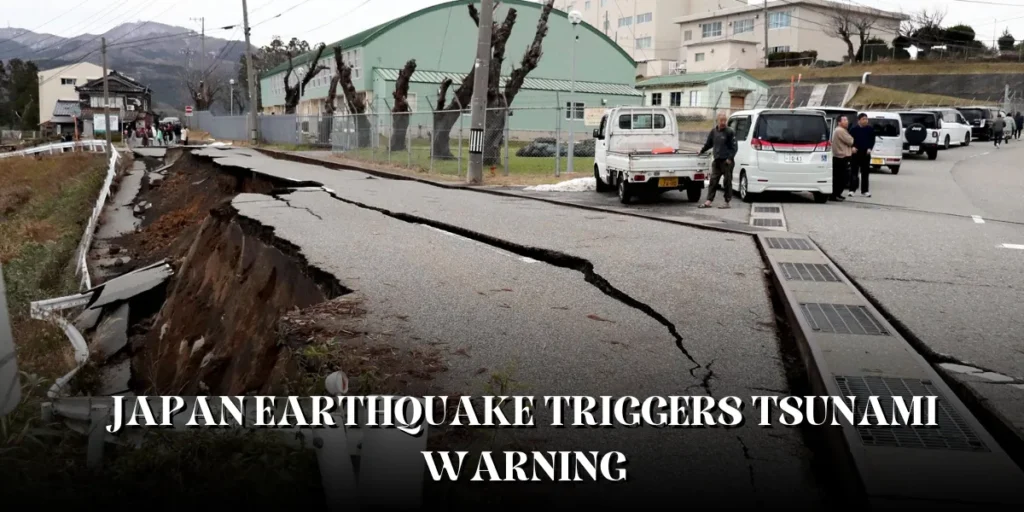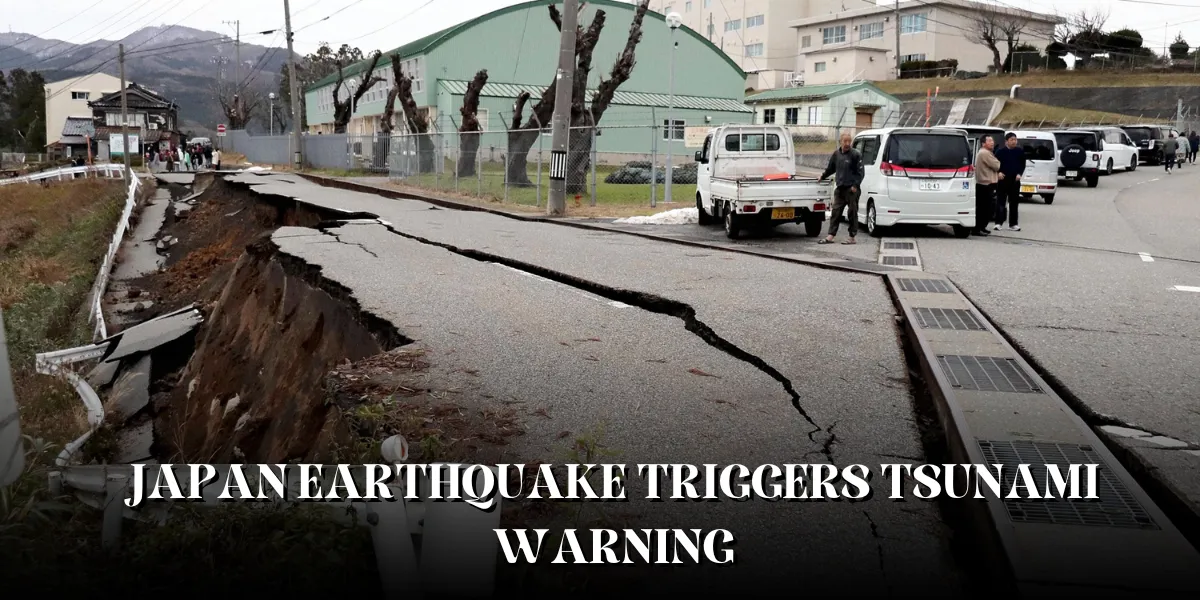
Japan Earthquake Triggers Tsunami Warning: Widespread Destruction and Global Alarm
August 14, 2024 – In the early hours of [date of earthquake], a powerful earthquake struck Japan, shaking the nation to its core. Measuring [magnitude] on the Richter scale, the earthquake’s epicenter was located in [location], hitting at precisely [time]. This seismic event not only triggered widespread panic but also led to the issuance of a tsunami warning, sending shockwaves across the world.
Earthquake Shakes Japan: A Nation on Edge
The earthquake’s violent tremors were felt across a vast area, leaving a trail of destruction in its wake. The sheer intensity of the quake caused buildings to collapse, roads to fracture, and critical infrastructure to fail. In cities and towns, residents fled their homes, seeking safety in open spaces as the ground convulsed beneath them.
Buildings Crumble, Lives Disrupted
The earthquake’s impact on infrastructure was immediate and devastating. High-rise buildings in metropolitan areas swayed dangerously, while older structures buckled under the strain. In rural areas, traditional wooden houses were flattened, trapping residents inside. The quake also triggered landslides in mountainous regions, cutting off entire communities and complicating rescue efforts.
Power Outages and Communication Failures
As the earthquake struck, power lines snapped, plunging large swaths of the country into darkness. Communication networks were also severely disrupted, making it difficult for people to contact loved ones or access emergency services. The sense of isolation only heightened the fear and uncertainty felt by millions of Japanese citizens.
Tsunami Warning Issued: A Race Against Time
In the immediate aftermath of the earthquake, authorities issued a tsunami warning for Japan’s extensive coastline. The threat of a tsunami loomed large, as experts warned that the undersea earthquake had displaced a massive volume of water, potentially sending deadly waves racing towards shore.
Evacuations and Precautionary Measures
Residents living in coastal areas were urgently advised to evacuate to higher ground. The government took swift action, closing schools, businesses, and government offices in affected regions. Evacuation orders were broadcasted across all media channels, urging people to leave their homes immediately.
The evacuation process was chaotic, as people hurriedly packed their belongings and joined long lines of vehicles trying to escape the danger zone. Traffic jams stretched for miles, and public transportation systems were overwhelmed as everyone sought refuge from the impending tsunami.
Panic and Uncertainty Grip the Nation
The tsunami warning caused widespread panic, with memories of past disasters, such as the 2011 Tōhoku earthquake and tsunami, still fresh in the minds of many. People scrambled to secure their loved ones, pets, and valuables, unsure of what the next few hours would bring. Shelters quickly filled to capacity, as families and individuals sought safety from the dual threats of aftershocks and a possible tsunami.
Rescue and Relief Efforts: Mobilizing to Save Lives
As the full extent of the earthquake’s impact became apparent, Japan’s emergency services were rapidly deployed to the hardest-hit areas. The priority was clear: rescue survivors trapped in the rubble and provide immediate medical attention to the injured.
Search and Rescue Operations
Rescue teams, including firefighters, police, and volunteers, worked tirelessly to locate and extract survivors from collapsed buildings. Specialized equipment, such as thermal imaging cameras and sniffer dogs, was used to detect signs of life beneath the debris. The race against time was critical, as aftershocks continued to shake the region, threatening to cause further collapses.
Medical Response and Emergency Shelters
Medical teams were dispatched to the scene, setting up temporary field hospitals to treat the injured. Ambulances and helicopters were used to transport the most critically wounded to major hospitals in nearby cities. Simultaneously, emergency shelters were established to house those who had lost their homes. These shelters provided not only a safe place to stay but also food, water, and psychological support for those traumatized by the disaster.
Government and International Aid
The Japanese government immediately activated its disaster response plan, mobilizing the Self-Defense Forces to assist with rescue and relief efforts. The military played a crucial role in reaching remote areas cut off by landslides and damaged roads. International aid organizations, including the Red Cross and the United Nations, also offered their support, sending supplies and expert personnel to assist with the relief efforts.
Damage Assessment: Understanding the Scope of Destruction
As rescue operations continued, attention turned to assessing the damage caused by the earthquake and the potential tsunami. Early reports indicated that the economic impact would be severe, with significant damage to infrastructure, homes, and businesses.
Economic Impact and Infrastructure Damage
The earthquake caused widespread destruction to Japan’s transportation network, including roads, bridges, and railways. Several major highways were rendered impassable, and rail services were suspended across affected areas. Ports along the coastline were also damaged, disrupting shipping and trade.
Businesses, particularly those in manufacturing and retail, faced significant losses due to structural damage and the disruption of supply chains. The financial markets reacted swiftly, with the Tokyo Stock Exchange experiencing a sharp decline as investors reacted to the news of the disaster.
Rebuilding and Recovery
Rebuilding the affected areas will be a monumental task, requiring extensive resources and coordination between government agencies, private companies, and international partners. The Japanese government has pledged to provide financial assistance to those affected and to expedite the rebuilding process. However, the road to recovery will be long, with many challenges to overcome.
Global Response: Solidarity and Support for Japan
The earthquake and tsunami threat in Japan has prompted a global outpouring of sympathy and support. Leaders from around the world have expressed their condolences to the Japanese people and offered assistance in any form needed.
International Aid and Collaboration
Countries across the globe have offered to send aid, including financial assistance, emergency supplies, and specialized rescue teams. International organizations, such as the United Nations and the World Health Organization, have also mobilized to support Japan’s disaster response efforts.
Lessons for the Future
This disaster serves as a stark reminder of the importance of disaster preparedness and international collaboration. As natural disasters become more frequent and severe due to climate change, the global community must continue to strengthen its ability to respond quickly and effectively to such events.
Conclusion: A Nation’s Resilience Tested
The earthquake and subsequent tsunami warning have caused immense destruction and suffering in Japan. Yet, amidst the chaos and fear, the resilience of the Japanese people shines through. With determination and the support of the global community, Japan will rebuild, stronger and more prepared for the future.
In times of crisis, it is crucial to remember the power of unity and the strength that comes from working together. The road ahead may be challenging, but with the world’s support, Japan will recover and emerge even more resilient.

